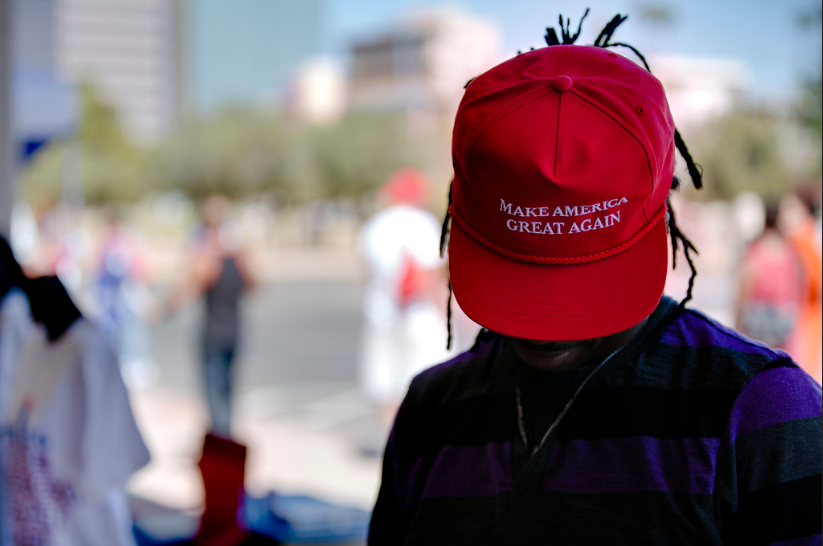According to the Southern Poverty Law Center, the US saw a spike of hate incidents after the election of Donald Trump on November 8th. 867 real-world (i.e., not internet-based) incidents were reported to the Center or covered in the media in just 10 days. USA Today reports that the the Council on American-Islamic relations also saw an uptick in reports and that the sudden rise is greater than even what the country saw after the 9/11 attacks. This is, then, likely just a slice of what is happening.
The Center doesn’t present data for the days coming up to the election, but offers the following visual as an illustration of what happened the ten days after the 8th.

If the numbers of reports prior to the 8th were, in fact, significantly lower than these, than there was either a rise in incidents after Trump’s victory and Clinton’s loss, or an increase in the tendency to report incidents. Most perpetrators of these attacks targeted African Americans and perceived immigrants.

The most common place for these incidents to occur, after sidewalks and streets, was K-12 schools. Rosalind Wiseman, anti-bullying editor and author of Queen Bees and Wannabes, and sociologist CJ Pascoe, author of Dude, You’re a Fag, both argue that incidents at schools often reflect adult choices. Poor role models — adults themselves who bully or who fail to stand up for the bullied — make it hard for young people to have the moral insight and strength to do the right thing themselves.
Lisa Wade, PhD is an Associate Professor at Tulane University. She is the author of American Hookup, a book about college sexual culture; a textbook about gender; and a forthcoming introductory text: Terrible Magnificent Sociology. You can follow her on Twitter and Instagram.


 To make a long, well-put, and worth-reading argument short: eviction isn’t rare as many policymakers and sociologists might assume; it is actually a horrifyingly common phenomenon. Urban sociologists have missed the magnitude of the eviction phenomenon because they have traditionally used neighborhoods as the unit of analysis, studying issues such as segregation and gentrification. Because eviction is rarely studied, we don’t have good data on eviction. Establishing a dataset of eviction is not a simple data collecting task, given that there are many forms of informal eviction. The consequences of eviction are devastating and have a profound, negative, and life-long impact on subsequent trajectories: worse housing, more eviction, and homelessness, all disproportionately affecting women of color with children (“a female equivalent of mass incarceration,” Desmond argued at a
To make a long, well-put, and worth-reading argument short: eviction isn’t rare as many policymakers and sociologists might assume; it is actually a horrifyingly common phenomenon. Urban sociologists have missed the magnitude of the eviction phenomenon because they have traditionally used neighborhoods as the unit of analysis, studying issues such as segregation and gentrification. Because eviction is rarely studied, we don’t have good data on eviction. Establishing a dataset of eviction is not a simple data collecting task, given that there are many forms of informal eviction. The consequences of eviction are devastating and have a profound, negative, and life-long impact on subsequent trajectories: worse housing, more eviction, and homelessness, all disproportionately affecting women of color with children (“a female equivalent of mass incarceration,” Desmond argued at a 







